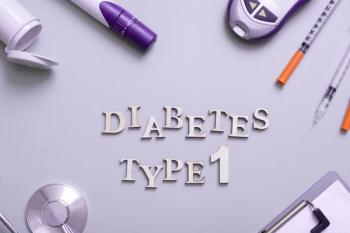
Inflammatory Bowel Disease May Increase Risk of Osteoporosis
Results of 2 recent studies suggested a higher risk of developing osteoporosis in patients with inflammatory bowel disease.
Results of 2 recent studies suggested a higher risk of developing osteoporosis in patients with inflammatory bowel disease (IBD).
In the first study, published in the
Danish investigators reported a significantly higher risk of developing osteoporosis in patients with IBD, including Crohn disease (CD) and ulcerative colitis (UC), compared with a control population.
Out of approximately 500 patients in the study, 338 (66%, CD: 164 [77%], UC: 174 [58%]) patients received ≥ 500 mg of corticosteroid within a year, resulting in 781 patient-years at risk of osteoporosis.
Of those, only 10.6% patient-years were followed by a dual-energy X-ray absorptiometry scan to measure bone mineral density (BMD) within the same or the following 2 years.
Overall, 14.2% of patients with IBD (14.6% with CD, 14% with UC, and 6.6%) of controls were diagnosed with osteoporosis during follow-up. “In this population-based inception cohort, the incidence of osteoporosis was significantly higher compared to a control population,” the investigators wrote.
“These results demonstrate the need of further awareness of the risk of osteoporosis among IBD patients, and prospective population-based studies are warranted,” they wrote.
In the second study, published in the
In 12 studies that included 3661 patients with IBD and 12,789 healthy controls, the prevalence of osteoporosis varied between 4% and 9% in studies including both CD and UC patients; 2% and 9% in studies including UC patients, and between 7% and 15% in studies including CD patients.
CD diagnosis, lower body mass index (BMI), and lower body weight were risk factors associated with osteoporosis or low bone mineral density (BMD).
The investigators determined that patients with CD had a potentially increased risk of osteoporosis or low BMD over time, whereas patients with UC did not. Increased age was associated with decreased BMD, and there was a positive association between weight and BMI and BMD over time.
“This systematic review found a possible increase of prevalence of osteoporosis in CD cohorts when compared to UC and cohorts including both disease types,” the investigators concluded.
References:
1. Lo B, Praest Holm J. Incidence, risk factors and evaluation of osteoporosis in patients with inflammatory bowel disease: A Danish population-based inception cohort with 10 years of follow-up. Journal of Crohn’s and Colitis. July 30, 2020. DOI:
2. Karnsund S, Lo B. Systematic review of the prevalence and development of osteoporosis or low bone mineral density and its risk factors in patients with inflammatory bowel disease. World Journal of Gastroenterology. September 21, 2020. DOI:
Newsletter
Pharmacy practice is always changing. Stay ahead of the curve with the Drug Topics newsletter and get the latest drug information, industry trends, and patient care tips.




































































































































